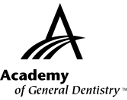|
Exercise No. 329
Subject Code: 250
Operative (Restorative) Dentistry
The 15 questions of this exercise are based on the article, “Effect of thermocycling and water storage on bond longevity of two self-etch adhesives”, on pages 39-44. This exercise was developed by Daniel S. Geare, DMD, in association with the General Dentistry Self-Instruction committee.
|
Reading the article and successfully completing the exercise will enable you to understand:
- the mechanism of bonding in self-etch adhesive (SEA) systems;
- the bond strength of 1-step and 2-step SEA systems;
- the reasons for bond failure; and
- the reasons for breakdown of the interface between tooth and restoration.
|

